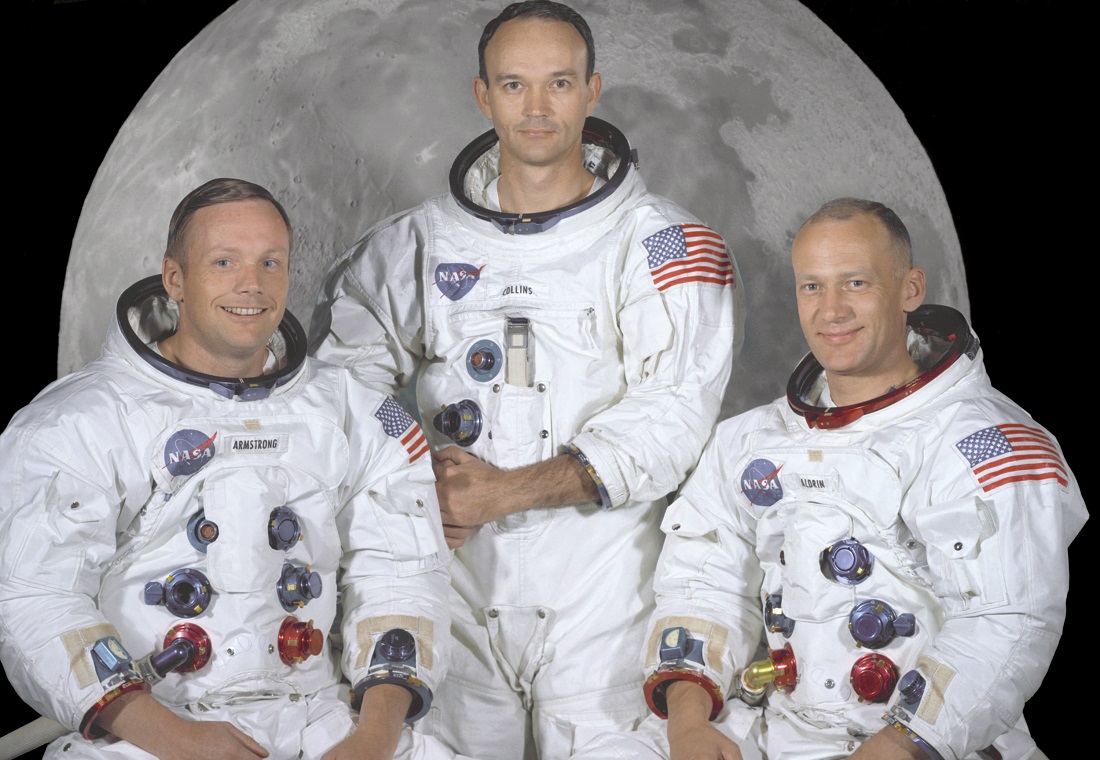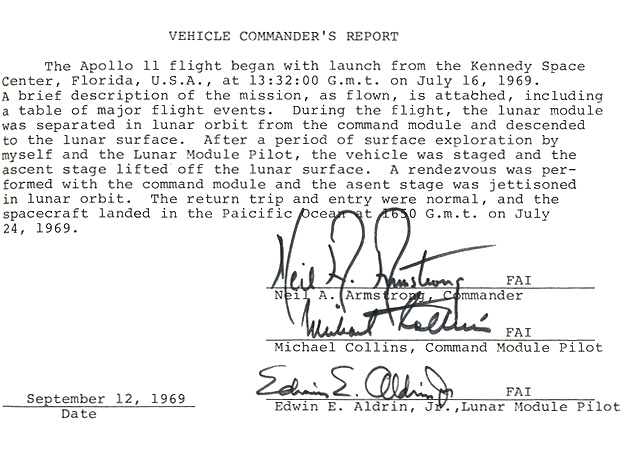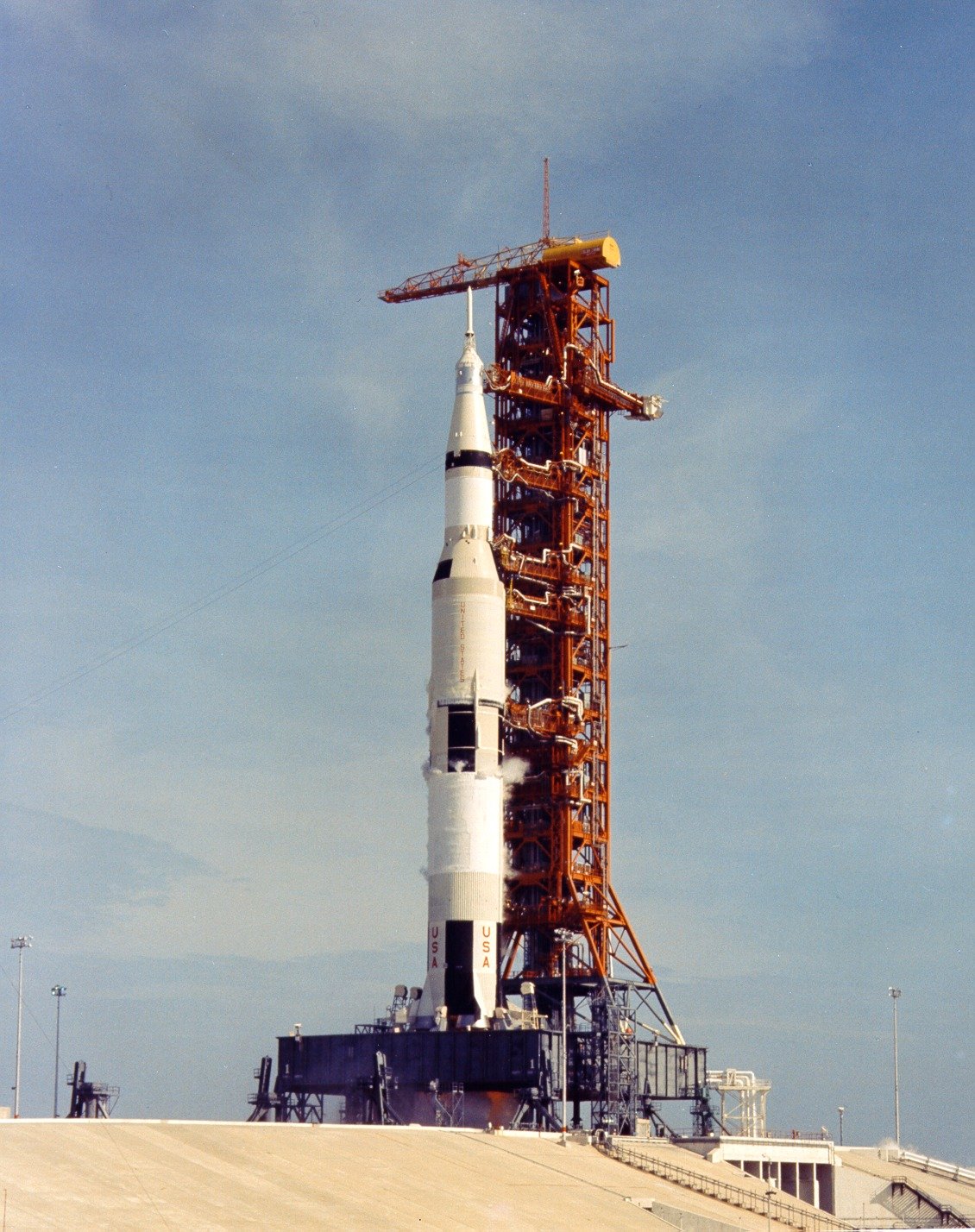FAI marks 50 years since humankind’s record-breaking “giant leap”
The 16th - 24th July 1969 NASA Apollo 11 mission remains one of the most important achievements in the history of humankind. Its legacy is being celebrated across the globe in July 2019, 50 years later.
The objective of the Apollo 11 program, set by US President John F. Kennedy on May 25, 1961 was to perform a crewed lunar landing and return safely to Earth, by the end of the decade. Eight years later Commander Neil Armstrong and Lunar Module Pilot Edwin “Buzz” Aldrin made history by making that goal a reality, orbiting and descending to the moon’s surface with the aid of Command Module Pilot Michael Collins, and taking the famous “one small step for man, one giant leap for mankind.”

Left to right: Commander, Neil A. Armstrong, Command Module Pilot, Michael Collins, and Lunar Module Pilot, Edwin E. Aldrin Jr.
During the legendary Apollo 11 mission five space records were set, each ratified by the FAI in liaison with the US National Aeronautic Association and attributed to Commander Neil Armstrong.
official FAI records for Apollo 11:
- Extravehicular duration in space: 2h 31min 40sec
- Extravehicular duration on the surface of the celestial body by an astronaut: 2h 31min 40sec
- Duration of stay in orbit around a celestial body: 59h 27min 50sec
- Duration of stay on the surface of the celestial body: 21h 36min 21 sec
- Greatest mass landed on the celestial body: 7 326.9kg
Among the documents held in the FAI archive are original photographs and video footage as well as transcripts from the vehicle commander’s report, signed by the three crew:

FAI commented: “The FAI’s role in ratifying aviation records remains just as important today as when the organisation was founded in 1905. Since those early days, the imagination of a few courageous individuals has permitted humankind to progress from flying a few metres above the earth’s surface to reaching the moon in 1969 and allowing us to explore ever further into space. We, the FAI, are honoured to be recording these important steps in the history of aeronautical and astronautical achievements.”
FAI recording history
In the 1960s, increasingly progressive and courageous space exploration projects by NASA and in the USSR tested out systems and equipment in preparation for an eventual lunar landing. During this so-called ‘Space Race’ the FAI ratified the records and collated documentation relating to each new achievement.

Apollo 11, Cape Kennedy, United States
Among the space records held in the FAI archives in Lausanne, Switzerland are signed Russian and English copies of Yuri Gagarin’s records from 1961; documents recording the longest duration in space and the greatest distance travelled by Valentina Tereshkova, the first woman in space; images and reports of the first spacewalk by Alexey Leonov in 1965 as well as documentation from the first crewed flight to the moon, attributed to Frank Borman in the Apollo 8 mission of 1968.
The most recent space record ratified by the FAI is that of Russian cosmonaut Gennady Padalka in 2015, who superseded fellow Russian Sergei Krikalev’s record of “Accumulated Space Time Flight”, spending a total of 878 days, 11 hours, 29 minutes and 24 seconds in space.
The FAI will be ready to document history and ratify new records as humankind continues to take giant leaps ever further into space.
Images: NASA

